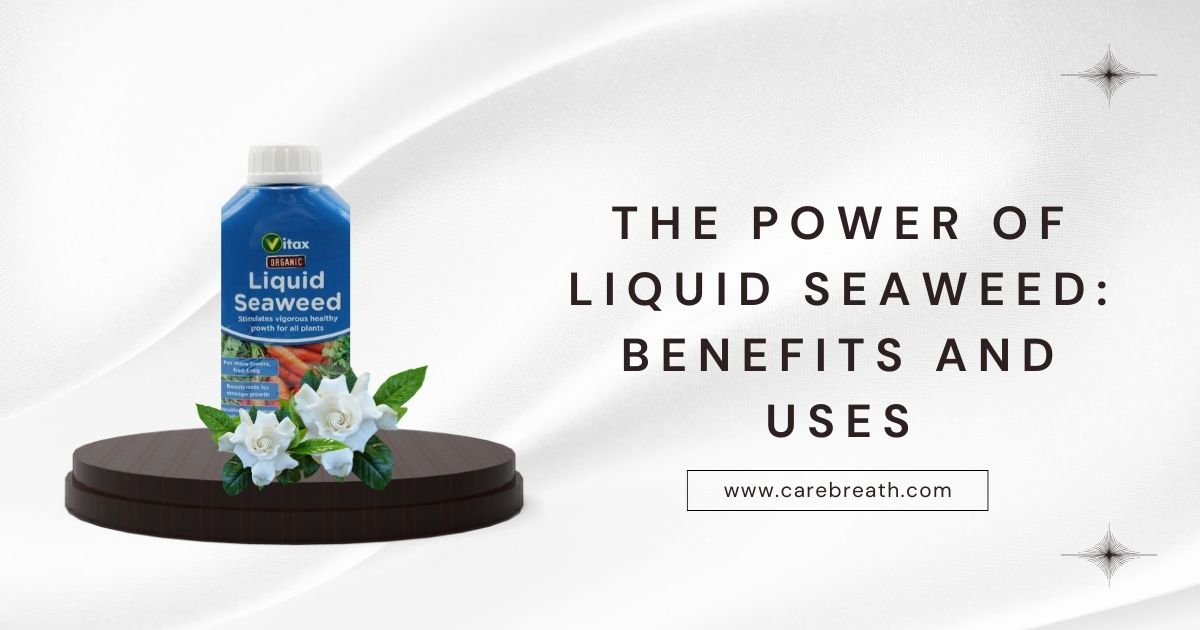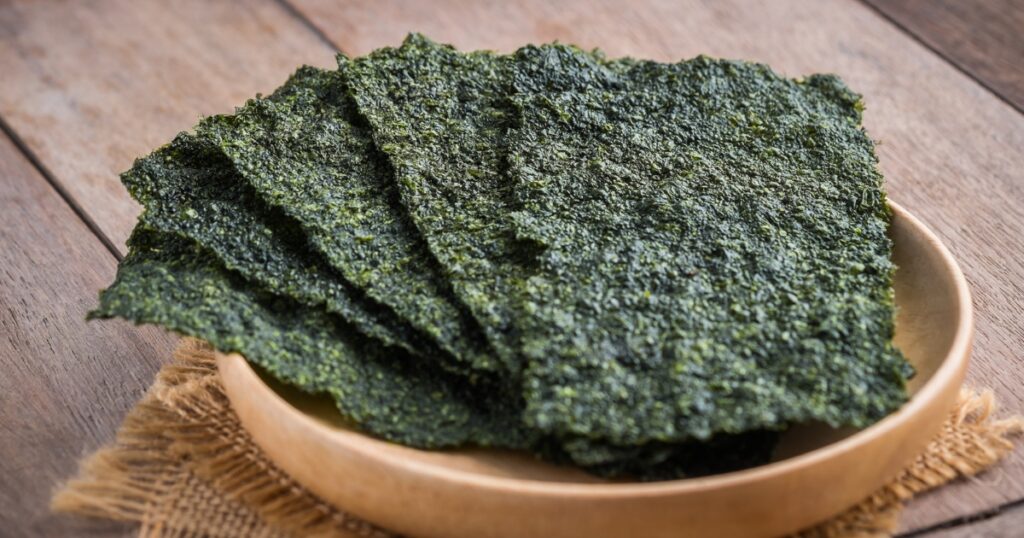The Power of Liquid Seaweed: Benefits and Uses

In this article, we will explore what liquid seaweed is, how it is produced, and its extensive benefits, as well as answer frequently asked questions.
What is Liquid Seaweed?
Liquid seaweed is a natural extract derived from marine algae, commonly found along rocky shorelines. It is rich in essential nutrients, including minerals, vitamins, amino acids, and plant hormones. Unlike synthetic fertilizers, which can harm the environment, liquid seaweed is organic, making it an eco-friendly choice for plant care and even human consumption.
How is Liquid Seaweed Extracted?
The process of creating liquid seaweed involves harvesting seaweed, drying it, and then converting it into a liquid form through processes like cold-press extraction or hydrolysis. These methods preserve the nutritional integrity of the seaweed, ensuring the final product is as potent as possible.
The Different Types of Liquid Seaweed
Various species of seaweed are used to produce liquid extracts. Among the most common are:
Ascophyllum Nodosum
This type of brown seaweed is particularly popular due to its high concentration of essential nutrients. It thrives in cold water regions and is known for its durability and adaptability.
Laminaria
Laminaria is another brown seaweed variety, rich in iodine and other vital minerals. It’s often used for soil enrichment and plant growth promotion.
Fucus Vesiculosus
Also known as bladderwrack, this type of seaweed is often used in both agricultural and nutritional supplements, due to its wide range of beneficial compounds.

The Nutritional Profile of Liquid Seaweed
Liquid seaweed is packed with a broad spectrum of nutrients that make it an excellent tool for promoting plant health and human well-being.
Key Nutrients Found in Liquid Seaweed
Liquid seaweed is a source of macronutrients like nitrogen, phosphorus, and potassium. Additionally, it contains trace elements like iron, manganese, and zinc, which play crucial roles in plant growth. Seaweed also boasts natural growth hormones such as cytokinins, gibberellins, and auxins.
Comparing Liquid Seaweed to Other Fertilizers
Unlike synthetic fertilizers, which may deliver a quick nutrient boost but can damage soil over time, liquid seaweed works slowly, enriching the soil with organic matter and enhancing the overall health of plants without leaving harmful residues.
How Does Liquid Seaweed Benefit Plants?
The benefits of liquid seaweed are numerous and well-documented in scientific research and practical gardening.
Boosting Plant Growth with Liquid Seaweed
Liquid seaweed provides plants with an abundance of nutrients, improving root development, increasing nutrient uptake, and boosting plant vigor. It is especially useful during periods of stress, such as drought or pest infestations.
Improving Soil Health with Liquid Seaweed
In addition to directly nourishing plants, liquid seaweed enhances the microbial life within the soil, promoting a healthy ecosystem. This leads to long-term improvements in soil structure and fertility.

Environmental Benefits of Using Liquid Seaweed
One of the key advantages of liquid seaweed is its minimal environmental impact.
Sustainability of Seaweed Harvesting
Seaweed is one of the most sustainable resources on the planet, growing rapidly without the need for fertilizers or freshwater. When harvested responsibly, it regenerates quickly, ensuring long-term availability.
Reducing Carbon Footprint with Liquid Seaweed
Using liquid seaweed as a natural fertilizer helps reduce the need for chemical fertilizers, which are energy-intensive to produce and transport. This results in a smaller carbon footprint and contributes to more sustainable farming practices.
How to Use Liquid Seaweed for Gardening
Liquid seaweed is versatile and easy to apply to your garden.
Application Methods for Liquid Seaweed
There are several ways to use liquid seaweed on plants:
Foliar Spray
Applying liquid seaweed as a foliar spray allows plants to absorb nutrients directly through their leaves.
Soil Drench
A soil drench ensures that nutrients are delivered directly to the plant’s root zone, promoting healthy root development.

Tips for Best Results Using Liquid Seaweed
For optimal results, apply liquid seaweed early in the morning or late in the afternoon when temperatures are cooler. This minimizes evaporation and ensures that the plants absorb the nutrients effectively.
Is Liquid Seaweed Safe?
Liquid seaweed is generally regarded as safe for both plants and humans.
Organic Certification and Safety Standards
Most liquid seaweed products on the market meet organic certification standards, ensuring they are free from harmful chemicals and safe for organic farming.
Toxicity Concerns and Myths
There are no known toxicity issues with liquid seaweed when used as directed. Myths about its safety are often based on misinformation or confusion with synthetic chemicals.
Liquid Seaweed for Human Consumption
In addition to its agricultural uses, liquid seaweed is becoming popular as a dietary supplement.
Health Benefits of Liquid Seaweed Supplements
Liquid seaweed supplements are rich in antioxidants, iodine, and essential minerals, which can support thyroid function, improve digestion, and boost overall immunity.
Dosage Recommendations for Liquid Seaweed
When taken as a supplement, it is essential to follow dosage guidelines, as excessive intake of iodine can cause thyroid imbalances.
Buying and Storing Liquid Seaweed
To reap the full benefits of liquid seaweed, it’s important to buy and store it properly.
Where to Buy High-Quality Liquid Seaweed
Look for reputable brands that offer organic, sustainably harvested seaweed. These are typically available at garden centers, health food stores, and online retailers.
Proper Storage Techniques for Liquid Seaweed
Store liquid seaweed in a cool, dark place. Once opened, keep the container tightly sealed to prevent contamination or degradation of the product.
FAQs about Liquid Seaweed
What is the shelf life of liquid seaweed?
Most liquid seaweed products have a shelf life of 2-3 years when stored properly.
Can liquid seaweed harm my plants?
No, when used according to instructions, liquid seaweed is safe for plants.
Is liquid seaweed safe for pets?
Yes, liquid seaweed is non-toxic to pets.
How often should I apply liquid seaweed?
Apply liquid seaweed once every two to four weeks during the growing season.
Can I mix liquid seaweed with other fertilizers?
Yes, liquid seaweed can be combined with other organic fertilizers to enhance plant health.
What are the signs of overuse of liquid seaweed?
Overuse may result in nutrient imbalances, leading to stunted growth or yellowing leaves.




